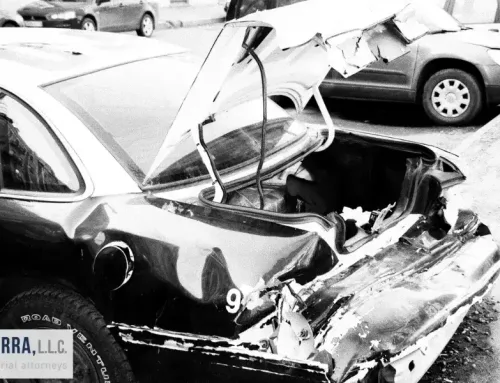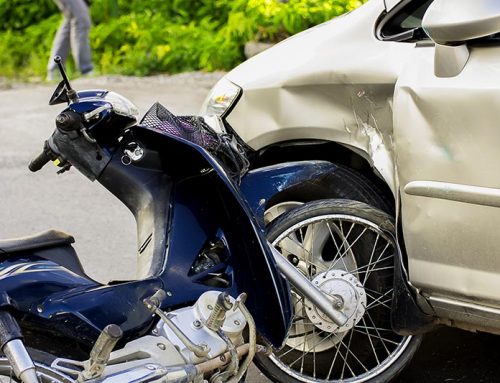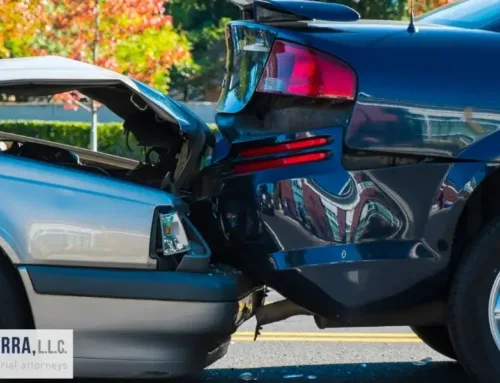Key Differences Between Uber vs. Lyft Accident Claims in Phoenix
Navigating the rideshare accident claims process after a Phoenix collision can feel like a maze with no exit. Been there? Yeah, it’s frustrating. While Uber and Lyft might seem interchangeable when you’re hailing a ride, their accident claims procedures couldn’t be more different. The documentation requirements, insurance coverage limits, and timeline expectations vary significantly, and getting it wrong could cost you thousands.
Phoenix riders need to understand these distinctions before an accident happens, not after you’re dealing with mounting medical bills and a damaged vehicle. Learn the key differences between Uber vs. Lyft accident claims in Phoenix, AZ to understand what to expect.
At Luis P. Guerra, we’ve guided hundreds of Phoenix residents through the complicated rideshare accident claims process. Our team has seen firsthand how Uber’s three-tier insurance structure differs from Lyft’s coverage model and trust me, the details matter. We’ve spent years studying the fine print in these companies’ policies that most people never read until it’s too late. The rideshare revolution changed how we travel through Phoenix, but it also created a legal landscape that’s still evolving. Need help making sense of it all? Our free consultation might be your smartest first step.
Understanding Uber Accident Claims in Phoenix
Uber accident claims in Phoenix follow a specific protocol that most riders never learn until they’re injured. The company’s three-tier insurance structure determines your coverage based on the driver’s status at the exact moment of collision.
|
Driver Status |
Uber Insurance Coverage |
|
App off |
Driver’s personal insurance only |
|
App on, waiting for ride |
$50,000 per person/$100,000 per accident |
| During active ride |
$1 million liability coverage |
Reporting an Uber accident must happen immediately through the app. You’ll need screenshots of your trip, photos of damages, and the driver’s information. But here’s what catches most people off guard, Uber’s insurance coverage in Arizona only kicks in completely when you’re actively on a trip. If the driver has the app on but hasn’t accepted a ride yet, you’re looking at significantly reduced coverage limits.
The Arizona Department of Insurance confirms that many personal auto policies exclude rideshare activities, creating potential coverage gaps that can leave you financially exposed after an accident.
Understanding Lyft Accident Claims in Phoenix
Lyft accident claims in Phoenix operate under a different structure that can directly impact your compensation. Unlike Uber’s app-based reporting, Lyft requires you to call their Critical Response Line before processing claims—a step that often delays the initial reporting process.
Lyft insurance coverage in Arizona follows this pattern:
- App off: Driver’s personal insurance only
- App on, waiting for ride: Contingent liability coverage ($50,000 per person)
- During active ride: $1 million liability policy
The major difference? Lyft’s contingent coverage only activates after your personal insurance denies the claim first. This creates an extra hurdle in the rideshare accident claims process that can add weeks to your settlement timeline.
And watch out for that deductible – Lyft’s sits at $2,500 compared to Uber’s $1,000. The U.S. Department of Transportation notes that these higher out-of-pocket costs often surprise passengers involved in Lyft accidents.
Differences Between Uber and Lyft Accident Claims
The differences between Uber and Lyft accident claims can significantly impact how much compensation you receive and how quickly you get it. So what exactly sets them apart?
First, claim initiation is entirely different. Uber allows in-app reporting with direct photo uploads, while Lyft requires that phone call to their Critical Response Line before anything moves forward. This distinction alone can add days to your claim timeline.
Second, the companies’ approach to settlements varies dramatically. Uber processes smaller claims through a more automated system, while Lyft involves human adjusters earlier. Ever wondered why your friend’s Uber claim settled faster than your Lyft claim? That’s why.
Comparative negligence in Arizona accidents plays a crucial role too. Arizona’s “pure comparative negligence” rule means your compensation gets reduced by your percentage of fault. Both companies leverage this to minimize payouts, but our experience handling Phoenix rideshare accidents shows Lyft tends to be more aggressive in assigning partial fault to claimants.
According to the Arizona Revised Statutes, transportation network companies must maintain specific minimum coverage requirements—but how they structure those policies differs substantially between companies.
Legal Considerations and Maximizing Compensation
Filing a claim after a rideshare accident in Arizona means navigating a complex web of company policies, insurance coverage, and state laws. But here’s the truth, going it alone often leaves money on the table.
Compensation for rideshare accident injuries typically covers:
- Medical expenses (past and future)
- Lost wages
- Pain and suffering
- Property damage
Understanding liability in Uber accidents versus liability in Lyft accidents requires recognizing the multiple potential defendants involved. Was the driver at fault? Was the rideshare company negligent in their hiring? Were there other vehicles involved? Each scenario activates different insurance policies.
The statute of limitations for accident claims in Arizona gives you just two years from the accident date to file. Miss this deadline, and you’re simply out of luck—period. This is why many victims seek legal representation for rideshare accidents early in the process.
A Phoenix accident attorney who specializes in rideshare claims can navigate these waters far more effectively than you can alone. The Arizona Judicial Branch provides resources on filing claims, but the complexity of these cases often requires professional guidance to ensure you don’t miss critical deadlines or documentation requirements.
Wondering if your case warrants legal help? Our team at Luis P. Guerra has successfully handled complex personal injury claims throughout Phoenix, including many involving both Uber and Lyft.
Frequently Asked Questions: Uber vs. Lyft Accident Claims in Phoenix
What’s the difference between Uber and Lyft’s insurance coverage models?
The difference between Uber and Lyft’s insurance coverage models comes down to their structure and how claims get processed. Both follow a three-tier system that depends on the driver’s status, but Lyft’s coverage is “contingent,” meaning it only kicks in after your personal insurance denies the claim first. This extra step can seriously delay your settlement. Uber’s coverage activates more directly, especially during active rides where both provide that $1 million liability policy. The real distinction shows up when drivers are waiting for ride requests—Uber’s coverage is more straightforward while Lyft’s creates more hoops to jump through.
How do I report an accident if I was in an Uber versus a Lyft?
How you report an accident differs significantly between these platforms. With Uber, you can report directly through the app—take screenshots of your trip, upload photos of damages, and submit driver information all in one place. It’s actually pretty streamlined.
Lyft? Totally different story. They require you to call their Critical Response Line before anything moves forward. I remember helping a client last year who waited 45 minutes on hold with Lyft’s response line while sitting on the side of the road after a minor collision. Meanwhile, her friend who’d been in an Uber accident the month before had already submitted everything through the app within minutes of her incident. This difference alone can add days to your claim timeline and creates immediate stress right after an accident when you’re already shaken up.
Why are Uber claims typically processed faster than Lyft claims?
Why are Uber claims typically processed faster than Lyft claims? Simple: different systems. Uber processes smaller claims through a more automated system, while Lyft involves human adjusters earlier in the process. This fundamental difference means Uber claims often move through the pipeline faster, sometimes settling weeks before comparable Lyft claims.
What are the deductibles for Uber versus Lyft in Phoenix?
What are the deductibles for Uber versus Lyft in Phoenix? Big difference here. Uber’s deductible is $1,000. Lyft? A whopping $2,500. That’s cash out of your pocket before insurance kicks in. Ouch.
How long do I have to file a rideshare accident claim in Arizona?
You’ve got exactly two years from the accident date to file your claim in Arizona. The statute of limitations is strict—miss this deadline and you’re completely out of luck. No exceptions. This applies whether you were in an Uber, Lyft, or any other rideshare vehicle. Two years might sound like plenty of time, but injuries can develop slowly and documentation takes time, so don’t wait.
Do I need a lawyer for a rideshare accident claim?
Do you need a lawyer for a rideshare accident claim? Not always. But usually? Yeah. Rideshare claims involve multiple insurance policies, company-specific protocols, and Arizona’s comparative negligence rules that can reduce your compensation. Most folks who try handling claims themselves miss out on significant compensation they didn’t even know they qualified for.
The rideshare companies have teams of lawyers protecting their interests. Who’s protecting yours? Especially with serious injuries or when fault isn’t crystal clear, getting legal representation makes a massive difference in outcome. We’ve seen settlement amounts double or triple once an attorney gets involved—particularly when dealing with Lyft, which tends to be more aggressive in assigning partial fault to reduce payouts.
What documentation do I need after a rideshare accident in Phoenix?
What documentation do you need after a rideshare accident in Phoenix? This is crucial stuff. You’ll need:
Screenshots of your trip summary from the app—this proves you were actually in a rideshare at the time. Photos of all damages and the accident scene from multiple angles. The driver’s information including name, license plate, and insurance details. Police report number (always call the police). Medical records documenting ALL your injuries.
Documentation requirements between companies aren’t identical though. Lyft demands more detailed incident reports compared to Uber. Missing even one piece of required evidence can delay your claim for weeks or result in a denial. Better to over-document than miss something important. I always tell clients to take twice as many photos as they think they need—you can’t go back and capture the scene later!
Conclusion
Finding yourself in a rideshare accident is confusing enough—then comes the paperwork, insurance battles, and trying to figure out if Uber and Lyft really handle things differently. Why does it matter? Because your compensation, timeline, and entire claims experience might depend on which rideshare service was involved. You searched for clear answers because you need to know your rights, understand the distinct insurance policies, and navigate the unique claims processes these companies have established in Phoenix.
When it comes to rideshare accident claims in Arizona, Luis P. Guerra brings decades of personal injury experience to your corner. Our team has successfully handled countless Uber and Lyft accident cases, navigating the complex web of rideshare insurance policies that frankly, most attorneys still don’t fully understand. We know exactly when each company’s insurance kicks in, how their claims departments operate differently, and—most importantly—how to maximize your compensation regardless of which platform was involved.
Feeling overwhelmed? We get it. Contact us for a free consultation today and get real answers from attorneys who’ve been there, done that, and won.
Key Takeaways
- Uber’s three-tier insurance structure differs significantly from Lyft’s coverage model
- Documentation requirements vary by company—Lyft demands more detailed incident reports
- Claims processing timeframes are typically faster with Uber than with Lyft
- Both companies have different deductibles—$1,000 for Uber vs. $2,500 for Lyft
- Arizona’s two-year statute of limitations applies to all rideshare accident claims




